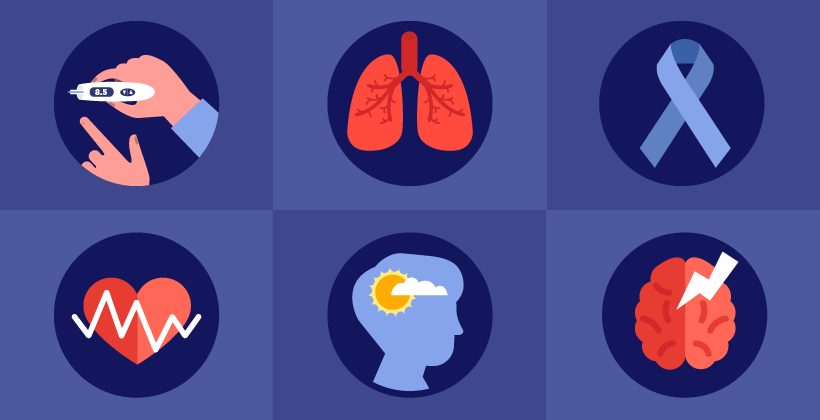Recommendations from WHO’s Commission on Ending Childhood Obesity
Last Updated : 22 April 2016The World Health Organization’s (WHO) Commission on Ending Childhood Obesity has presented its consensus report with a set of recommendations that are likely to be most effective at tackling the rising trend of children who are affected by obesity or excess weight. The recommendations are accompanied by specific actions and responsibilities for the different actors to support a more successful implementation.
Childhood obesity is a major global public health problem. Over 41 million children under the age of five were estimated to live with excess weight in 2014, mostly coming from low- and middle-income countries. No wonder that the WHO decided to establish a Commission with renowned experts from a variety of relevant backgrounds, facilitating a better informed and more comprehensive response to the problem.
The Commission recognises that “childhood obesity undermines the physical, social and psychological well-being of children and is a known risk factor for adult obesity and non-communicable diseases”, and urges to act now to improve the health of this generation and the next.
Although overweight, obesity, and related diseases are preventable, tackling childhood obesity has proven to be challenging, slow and with inconsistent results so far. Therefore, the Commission has developed a comprehensive package of recommendations for governments to address this growing issue, provide guidance, education and put in place new policies. The recommendations address childhood obesity in six areas:
Promotion of intake of healthy foods: The Commission encourages to set up programmes to promote the consumption of foods that contribute to a healthy diet and to reduce intake of those that do not. Examples mentioned are: providing easy to understand nutrition information and guidelines for both adults and children, introducing tax on sugar-sweetened drinks, reducing marketing to children and increasing access to fresh foods. It is also crucial to educate people by providing practical, and understandable information on healthy diets that people can easily adopt in their everyday lives.
Promotion of physical activity: Lifestyles of many children and adolescents become more and more sedentary. Therefore, parents, carers and professionals including teachers should encourage children to be more physically active. Governments should ensure that adequate facilities, such as recreational spaces, walking and cycling paths, are in place for children to use.
Preconception and pregnancy care: The care that a woman receives before, during and after her pregnancy may greatly influence the health of a child. The Commission recommends appropriate and timely screening, diagnosis and management of conditions that can increase the risk of developing obesity in children. It is also advised to give guidance and advice promoting good nutrition and healthy diets before conception and during pregnancy for both mothers and fathers. Moreover, the use of alcohol, tobacco and drugs should be avoided.
Early childhood diet and physical activity: The first years of life are critical to develop good eating and physical activity habits, which can help to reduce the risk of developing obesity later in life. Breastfeeding, exclusively for the first six months of life, is highly recommended by WHO and crucial for the correct growth and development of a child. The Commission highlights that mothers should be encouraged and have appropriate facilities outside home for breastfeeding. When other foods are introduced in children’s diets, these should be low in sugar, salt and fat. Also, physical activity and good quality sleep should be a part of child’s daily routine both at home and at the childcare facilities.
Health, nutrition and physical activity for school-age children: School-age children are often faced with many challenges. Peer-pressure, body image and exposure to unhealthy choices in school canteens may affect their decisions on what they eat and how physically active they are. It is important to create a healthy environment at schools with healthy meals and drinks, including access to fresh water. Also, nutrition and health education should ensure that children and adolescents understand the role of nutrition for good health. Similarly, regular participation in physical activities should be organised and promoted.
Weight management: For children and adolescents who live with obesity, the aim is to reduce the level of overweight, improve obesity-related disorders and decrease the risk factors for additional weight gain. The recommendation is to provide appropriate weight management services that are family-based, include nutrition, physical activity and psychosocial components, and that are delivered by multi-professional teams with appropriate training and resources.
The Commission believes that a whole-of-society approach, with clear commitments of the different actors, will facilitate a successful implementation of the recommendations. Sets of actions and responsibilities were proposed for the WHO itself, governments, academics, non-governmental organisations, and the private sector. Moreover, the Commission stated that strong monitoring and accountability (responsibility) systems have to be in place to oversee the prevalence of obesity in children, help with policy development and measure the effectiveness of interventions. While every actor involved should take ownership, leadership and necessary steps, collaboration between them all is crucial to tackle childhood obesity.








